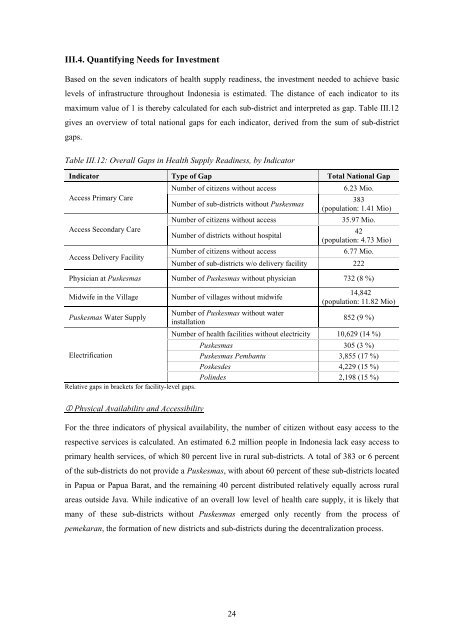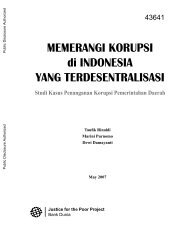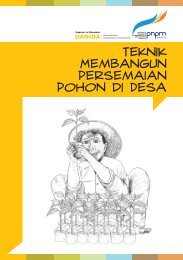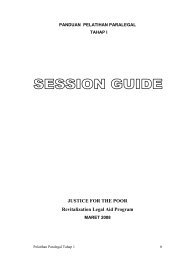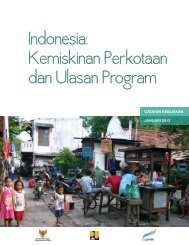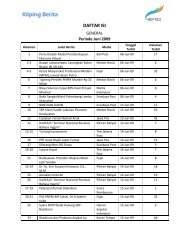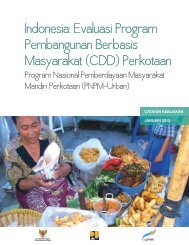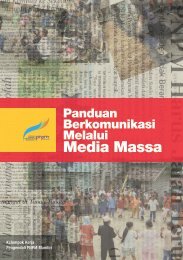PODES Infrastructure Census 2011 Report on ... - psflibrary.org
PODES Infrastructure Census 2011 Report on ... - psflibrary.org
PODES Infrastructure Census 2011 Report on ... - psflibrary.org
You also want an ePaper? Increase the reach of your titles
YUMPU automatically turns print PDFs into web optimized ePapers that Google loves.
III.4. Quantifying Needs for InvestmentBased <strong>on</strong> the seven indicators of health supply readiness, the investment needed to achieve basiclevels of infrastructure throughout Ind<strong>on</strong>esia is estimated. The distance of each indicator to itsmaximum value of 1 is thereby calculated for each sub-district and interpreted as gap. Table III.12gives an overview of total nati<strong>on</strong>al gaps for each indicator, derived from the sum of sub-districtgaps.Table III.12: Overall Gaps in Health Supply Readiness, by IndicatorIndicator Type of Gap Total Nati<strong>on</strong>al GapAccess Primary CareAccess Sec<strong>on</strong>dary CareAccess Delivery FacilityNumber of citizens without accessNumber of sub-districts without PuskesmasNumber of citizens without accessNumber of districts without hospitalNumber of citizens without access6.23 Mio.383(populati<strong>on</strong>: 1.41 Mio)35.97 Mio.42(populati<strong>on</strong>: 4.73 Mio)6.77 Mio.Number of sub-districts w/o delivery facility 222Physician at Puskesmas Number of Puskesmas without physician 732 (8 %)Midwife in the VillagePuskesmas Water SupplyElectrificati<strong>on</strong>Relative gaps in brackets for facility-level gaps.Number of villages without midwifeNumber of Puskesmas without waterinstallati<strong>on</strong>14,842(populati<strong>on</strong>: 11.82 Mio)852 (9 %)Number of health facilities without electricity 10,629 (14 %)Puskesmas 305 (3 %)Puskesmas Pembantu 3,855 (17 %)Poskesdes 4,229 (15 %)Polindes 2,198 (15 %) Physical Availability and AccessibilityFor the three indicators of physical availability, the number of citizen without easy access to therespective services is calculated. An estimated 6.2 milli<strong>on</strong> people in Ind<strong>on</strong>esia lack easy access toprimary health services, of which 80 percent live in rural sub-districts. A total of 383 or 6 percentof the sub-districts do not provide a Puskesmas, with about 60 percent of these sub-districts locatedin Papua or Papua Barat, and the remaining 40 percent distributed relatively equally across ruralareas outside Java. While indicative of an overall low level of health care supply, it is likely thatmany of these sub-districts without Puskesmas emerged <strong>on</strong>ly recently from the process ofpemekaran, the formati<strong>on</strong> of new districts and sub-districts during the decentralizati<strong>on</strong> process.24


